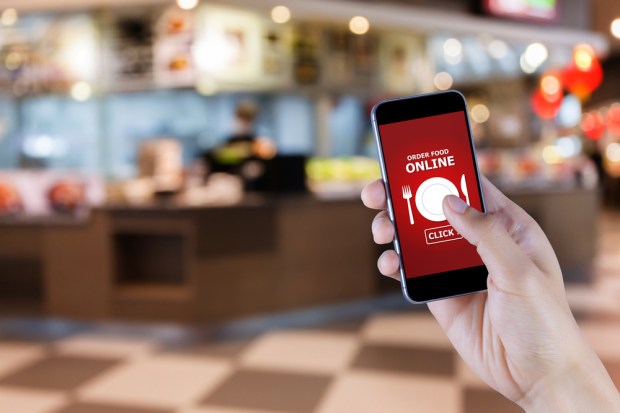Has Mobile OrderAhead Become A Must Have For Coffee Shops?

Coffee shops — even ones that make extraordinary coffee — are realizing that convenience is almost as important as the brew. Consumers want their cup of joe to be ready when they show up to the store. To that end, The Coffee Bean & Tea Leaf, rolled out mobile ordering earlier this year to help customers skip the line at the counter.
The chain, which has 1,200 locations and was founded in 1963 in California, is hardly alone in its view. Quick service restaurants (QSRs), cafes and other eateries are developing order-ahead apps to ensure consumers can rapidly get in and out the door, according to the latest PYMNTS Mobile Order-Ahead Tracker.
Mobile ordering POS software developer Appetize Technologies has raised $50 million in total funding. In January, the company said that it has raised $20 million in Series B funding. Shamrock Capital Advisors led the round and Silicon Valley Bank provided additional financing. Appetize said it would use the funding to onboard large clients and enhance its platform, among other initiatives. The company provides payment technology to a range of business, from stadiums to chain stores. In an announcement, Appetize’s co-founder and CEO Max Roper said, “We’re replacing legacy competitors at record speed and driving leading initiatives like self-service and mobile ordering to big brands. This additional investment gives us even more ability to grow and capture significant market share.” An “undisclosed investment” by the National Football League brought the total raised by the company to $50 million, the Los Angeles Business Journal reported in April.
Five percent of restaurants’ total sales are currently estimated to be from mobile orders, Starbucks Mobile Order and Pay service, which opened up to non-members earlier this year, gained steam in Q3. Mobile Order and Pay transactions make up 13 percent of U.S. company-operated transactions, Starbucks said in July. That number was 12 percent in Q2. In the fiscal third quarter of 2017, Mobile Order and Pay accounted for 9 percent of those transactions. The chain’s loyalty program, too, showed gains. Starbucks Rewards added 1.9 million active members during Q3 — a 14 percent year-over-year increase. Those consumers have a notable impact on total revenue, as they account for 40 percent of sales. That number is up from 39 percent in Q2 2018, and from 36 percent in the third quarter of 2017.
Dunkin’ spent $100 million to advance store concept plans. The new 2,200-square-foot concept stores separate the drive-through lanes for those who ordered ahead via mobile and those that didn’t, making it easier for mobile customers to cruise through. The stores’ interior design mirrors that separation, with a separate order-ahead queuing area. The design also goes one step further through a series of self-service kiosks, where people can order without the help of a staff member, as well as a grab-and-go section with simple, pre-packaged items like yogurt, apple sauce and beef jerky. The store has also gotten something of an interior design makeover to match its more modern infrastructure. The bright pinks and oranges that have become the brand’s signature colors figure prominently in the balloons for its grand opening, but are less apparent in the color scheme of the interior of the restaurant itself. Instead, there’s more a modern, polished wood aesthetic that many observers noted would not be out of place in a Starbucks.
Cava offers $300 million for Zoe’s Kitchen. Chain restaurants are facing rising competition and Zoe’s in particular, saw its same-store sales drop by 2.3 percent in Q1. Cava is described as a “fast-casual juggernaut” and has notched over $130 million worth of funding since its 2011 launch. The move to purchase Zoe’s, which was announced in August, means that Cava could bring its technological expertise to the restaurant. “We’re looking forward to learning more about Zoe’s business and understanding how we can apply a lot of the digital capabilities we’ve built through the years at Cava,” Cava CEO Brett Schulman, told Reuters.
A little more than a quarter — or 28 percent — of global consumers have paid for food or drink via a mobile app. Olo and Punchh, for instance, joined forces on a mobile ordering app for the Asian fast-casual franchise Teriyaki Madness. Guests can order bowls and plates through the Olo mobile app or a web browser and skip the line when picking up their food. In terms of market. The app incorporates more than just mobile order-ahead capabilities. It also weaves in loyalty elements and other useful tools. Customers can collect “redeemables” to use toward future mobile and in-store purchases — although Punchh reported in June that the full loyalty program would not launch for another six to 10 months.
Despite the enthusiasm over mobile-order ahead, The Coffee Bean & Tea Leaf’s rollout has been carefully phased. After over 54 years in business the brand has learned that measuring twice, cutting once is the way to launch new initiatives. That is, like a signature brew, good mobile-order ahead technology takes time to develop.
